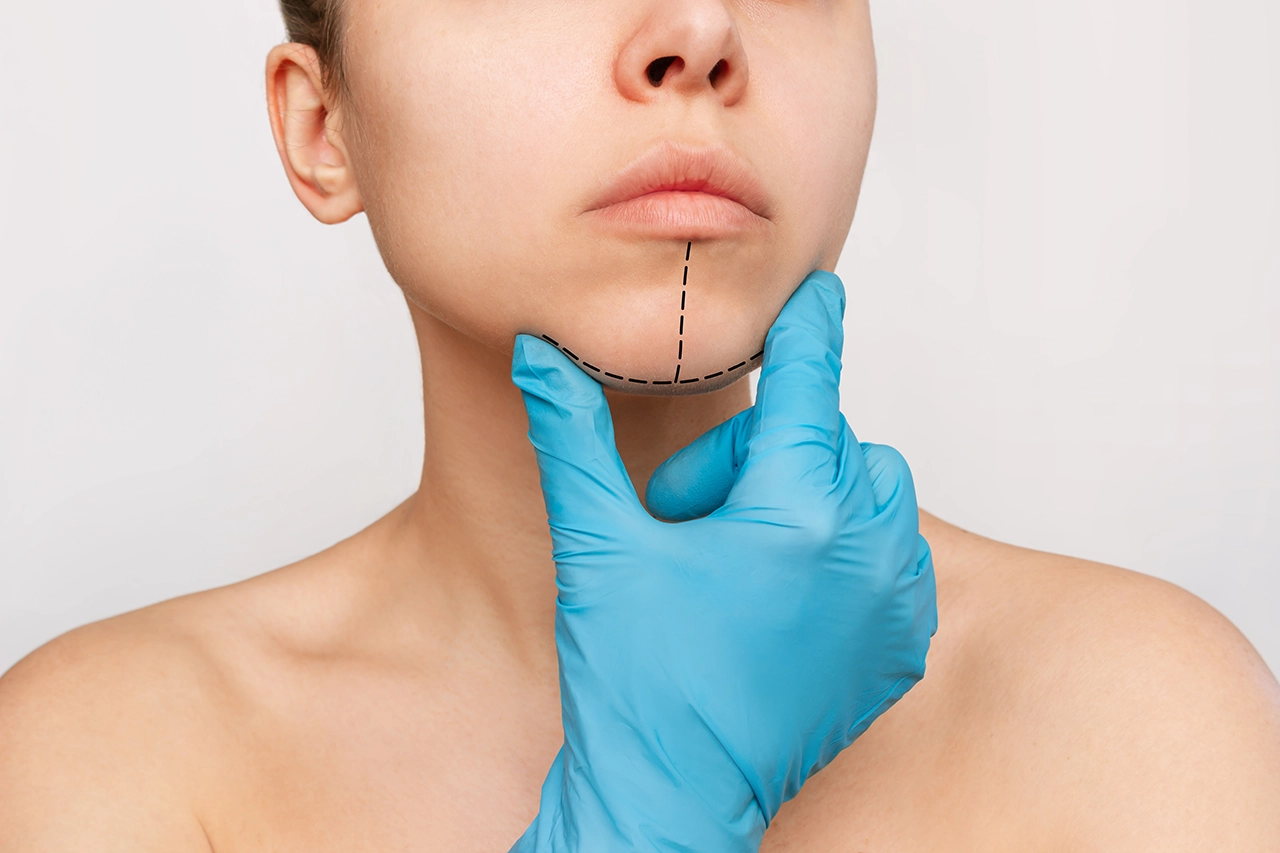
Corrective Jaw Surgery - Benefits & Recovery Tips
Corrective jaw surgery, also known as orthognathic surgery, is a transformative procedure performed by oral and maxillofacial surgeons to correct a wide range of dental and skeletal irregularities involving the upper and lower jaws. From restoring a proper bite to enhancing facial appearance, this procedure offers both functional and aesthetic benefits.
At Brighton Implant Clinic, we frequently see patients who suffer from jaw misalignment, TMJ disorders, or facial disproportions - all of which may benefit from orthognathic surgery.
Let’s explore the key aspects of corrective jaw surgery, its benefits, the recovery process, and tips to ensure the best outcomes.
Understanding Corrective Jaw Surgery
Corrective jaw surgery involves repositioning the jawbones to improve alignment between the jaws and teeth. It's typically recommended when braces alone cannot correct bite issues due to underlying jaw abnormalities or growth discrepancies.
The surgery may focus on the upper jaw (maxilla), lower jaw (mandible), or both. In many cases, a genioplasty (chin surgery) is also performed to improve facial balance.
Who Needs Orthognathic Surgery?
Patients who may benefit from corrective jaw surgery often experience:
- Difficulty chewing or biting food
- Speech problems
- Chronic jaw or TMJ pain
- Open bite, underbite, or overbite
- Protruding jaw or receding chin
- Breathing problems such as obstructive sleep apnea
- Jaw growth issues or facial trauma
Types of Corrective Jaw Surgery

Every patient’s needs are unique, and the type of surgery recommended depends on the area and severity of misalignment.
Common surgical approaches:
- Maxillary Osteotomy – Repositions the upper jaw to correct open bite, crossbite, or excessive gum display.
- Mandibular Osteotomy – Adjusts the lower jaw (mandible) for underbite or overbite correction.
- Bimaxillary Osteotomy – Involves both jaws to address complex discrepancies.
- Genioplasty – Enhances the chin structure, often performed in conjunction with jaw surgery.
- Maxillomandibular Advancement (MMA) – Repositions the upper and lower jaws forward to treat sleep apnea.
Each procedure involves making surgical incisions, moving the bone into a new position, and securing it with plates and screws—usually made of medical-grade titanium.
Benefits of Corrective Jaw Surgery
Corrective jaw surgery delivers powerful results that go far beyond physical realignment. From better function to improved appearance and oral health, the transformation can be life-changing.
Functional Improvements
Patients experience immediate relief from chronic jaw tension and enjoy restored ability to chew, speak, and breathe comfortably. For those with TMJ disorders or sleep apnoea, the surgery can drastically reduce symptoms and enhance quality of life.
Aesthetic Enhancements
By repositioning the jaw, the surgery balances facial features, enhances the profile, and corrects asymmetry. This often results in a natural-looking improvement that boosts self-esteem and personal confidence.
Long-Term Oral Health
Aligning the jaws helps prevent uneven tooth wear and reduces the risk of dental complications over time. It also enhances the effectiveness of orthodontic treatment and makes daily oral hygiene significantly easier to maintain.
The Surgical Journey: What to Expect

Understanding what happens before, during, and after corrective jaw surgery helps patients feel more informed, confident, and prepared for the process ahead. At Brighton Implant Clinic, we guide each patient through this journey with a personalised treatment plan and compassionate care.
Pre-Surgical Orthodontics
Before the surgery itself, most patients undergo orthodontic treatment with braces for 12 to 18 months. This phase ensures that your teeth are correctly positioned so that, once your jaw is realigned, your bite will fit together harmoniously. Advanced diagnostic tools such as CBCT scans, digital impressions, and 3D surgical simulations are used to map out every detail of your procedure, allowing for precise planning and predictable results.
The Procedure Itself
Corrective jaw surgery is typically performed under general anesthesia, meaning you’ll be fully asleep and won’t feel any pain during the operation. The procedure usually lasts between 1.5 and 4 hours, depending on the complexity of the case and whether one or both jaws are involved. Most patients stay in the hospital for one or two nights to allow for monitoring and early recovery.
All surgical incisions are made inside the mouth, eliminating the risk of visible scarring. During the operation, the jawbones are carefully cut, repositioned, and then stabilized using titanium plates and screws. These small, biocompatible materials provide the strength needed for your bones to heal in their new position and are typically left in place permanently.
This stage marks a critical turning point in your treatment—but it’s just one part of the broader journey toward a healthier, more balanced smile.
Recovery Timeline: Healing in Phases
Healing from jaw surgery occurs gradually. Here's a breakdown of what to expect:
Most patients are back to work or school within 2–3 weeks, depending on the nature of their work and personal healing speed.
Nutrition and Diet: Fueling Your Recovery
Following surgery, nutrition becomes both a necessity and a challenge. A liquid-to-soft food diet is essential during the first 6–8 weeks.
Dietary Tips
- Begin with nutrient-rich smoothies, soups, and purees
- Progress to soft foods like mashed potatoes, scrambled eggs, and pasta
- Stay well hydrated and avoid chewy, crunchy, or spicy foods
- Use a blender for variety and convenience
High-protein intake supports tissue healing and muscle repair, while vitamin C and zinc aid in wound healing.
Managing Pain, Swelling, and Discomfort

Mild to moderate discomfort, facial swelling, and bruising are expected parts of the healing process following corrective jaw surgery—but with the right care, these symptoms can be well controlled. Most patients report that swelling peaks within the first 48 to 72 hours and gradually subsides over the following week.
To ease discomfort, your surgeon will prescribe medications to manage pain and reduce inflammation. Applying cold compresses during the initial 48 hours can significantly reduce swelling, while keeping your head elevated during rest or sleep helps with fluid drainage and minimises facial puffiness. It’s also important to avoid heavy lifting or vigorous physical activity in the early stages, as this can delay healing or worsen inflammation.
Some patients may experience temporary numbness or tingling in the chin, lips, or cheeks due to the proximity of surgical work to the nerves around the jaw. This sensation is usually short-lived and improves gradually as the nerves recover, although in rare cases, it may persist longer and require monitoring by your care team.
Oral Hygiene After Jaw Surgery
Maintaining oral hygiene is crucial - even during healing.
Gentle Yet Effective Cleaning Tips:
- Rinse with prescribed antiseptic mouthwash
- Use a baby toothbrush or soft-bristled brush
- Avoid brushing surgical sites for the first 7–10 days
- Attend all follow-ups at your maxillofacial clinic
Proper hygiene prevents infection and supports smooth healing of incision sites.
Resuming Daily Activities and Exercise
A return to routine life is gradual and requires care.
- Rest is vital during the first week
- Light activities like walking are encouraged after 10–14 days
- Avoid contact sports or weightlifting for at least 6–8 weeks
- Speak with your oral and maxillofacial surgeon before resuming full physical routines
Emotional support and realistic expectations are equally important for psychological recovery.
Risks and Complications: What You Should Know

While orthognathic surgery is generally safe, being informed helps patients feel reassured.
Possible Risks:
- Infection at incision sites
- Temporary or permanent numbness
- Relapse or slight jaw shift
- Need for additional surgeries in rare cases
Choosing an experienced clinic like Brighton Implant Clinic significantly reduces these risks through advanced planning and surgical precision.
Why Choose Brighton Implant Clinic?
At Brighton Implant Clinic, our expertise in oral and maxillofacial surgery is matched by our patient-first philosophy.
What Sets Us Apart
- Multi-disciplinary approach combining orthodontics, prosthetics, and surgery
- Precision diagnostics with 3D CBCT imaging
- Friendly and transparent treatment planning
- Locations across Brighton, Hove, Hailsham, and Worthing
Your journey from diagnosis to post-op care is fully supported every step of the way.
Frequently Asked Questions
Is corrective jaw surgery painful?
Most patients experience moderate discomfort during the first week, managed with pain relievers. The procedure is performed under general anesthesia, so you're completely asleep and pain-free during surgery.
How long is the total recovery time?
Initial healing typically occurs in 6–8 weeks, but complete bone healing and final orthodontic adjustments may take up to 12 months.
Will I still need braces after surgery?
Yes. Braces or aligners are often worn for several months after surgery to fine-tune your bite and jaw alignment.
Can jaw surgery help with sleep apnea?
Absolutely. Maxillomandibular advancement (MMA) surgery can open the airway and significantly reduce obstructive sleep apnea symptoms.
Are there non-surgical alternatives?
For minor jaw alignment issues, orthodontics alone may suffice. However, for skeletal discrepancies, surgery is typically required for functional and long-term results.
Conclusion
Corrective jaw surgery is a life-changing solution for individuals suffering from jaw misalignment, bite issues, facial asymmetry, or related health concerns.
When performed by skilled oral and maxillofacial surgeons, it can significantly improve both function and appearance—leading to better breathing, clearer speech, a proper bite, and a more confident smile.
At Brighton Implant Clinic, our team offers comprehensive evaluation and care, ensuring that your orthognathic journey is safe, informed, and successful. Whether you’re exploring surgery for medical or cosmetic reasons, we’re here to guide you with expertise and empathy.










